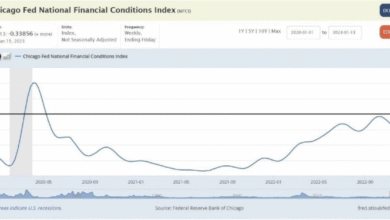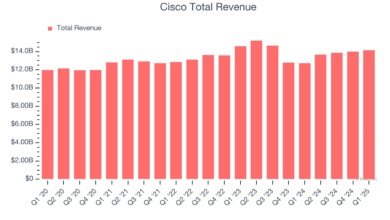University of Virginia President Resignation Amid Pressure

In a significant development for the University of Virginia, President Jim Ryan announced his resignation, marking a pivotal moment in the institution’s leadership amidst mounting pressure from the Trump administration. The administration’s scrutiny intensified due to ongoing investigations into UVA’s diversity practices, particularly surrounding its diversity, equity, and inclusion (DEI) initiatives. During a meeting with his senior leadership team, Ryan revealed his decision, which echoes the broader implications for Virginia educational policies amid political turbulence. Notably, the push for his resignation coincided with a directive from the Justice Department highlighting concerns over the university’s compliance with federal mandates on diversity programs. This unfolding situation has not only drawn criticism from local Democratic Senators but also raises essential questions about the future of diversity practices at UVA and their potential impact on the university’s standing in higher education.
The recent departure of the University of Virginia’s president signals a crucial turning point in the institution’s governance, influenced heavily by external political dynamics. Jim Ryan’s resignation surfaces against a backdrop of inquiries spearheaded by the Trump administration into the university’s diversity strategies, stirring intense discussions in higher education circles. In light of federal pressures related to equity and inclusivity, the university is now faced with reevaluating its stance on DEI programs, which were previously targeted for elimination as part of a broader push against such initiatives. This complex scenario underscores the intricate interplay between local educational leadership and national political agendas, as the university navigates the challenges imposed by Virginia’s prevailing educational policies. The reactions from key stakeholders, including state Senators, further illuminate the ongoing debate over academic freedom and institutional autonomy in an increasingly contentious political landscape.
The Impact of Jim Ryan’s Resignation on University Governance
The resignation of University of Virginia President Jim Ryan marks a significant turning point in the school’s governance structure. Having held office since 2018, Ryan was seen as a progressive leader who advocated for diversity, equity, and inclusion within the campus community. However, the growing pressure from government entities, particularly from the Trump administration, has forced a reevaluation of institutional priorities. The recent investigation into UVA’s diversity practices and the subsequent backlash led to external forces influencing significant leadership decisions, raising questions about the autonomy of the university’s administration.
Jim Ryan’s decision to resign is not just a personal loss but reflects deeper issues within higher education governance. The dynamics between federal mandates and university policies are becoming increasingly fraught, influencing the operational freedoms of institutions like UVA. As Ryan communicated his rationale for leaving to his senior leadership team, the implications of his departure extend to broader discussions on educational policies in Virginia, especially in relation to diversity and inclusion initiatives.
Understanding the Pressure from the Trump Administration
The pressure from the Trump administration has profoundly affected higher education policies, especially in regards to diversity initiatives at universities. The investigation launched by the Justice Department into the University of Virginia’s DEI programs raises significant concerns about the extent to which governmental politics can invade academic autonomy. Following directives that forced institutions to reassess their diversity practices, many universities faced the dilemma of adhering to federal guidelines at the risk of their DEI efforts, which are vital for creating inclusive environments.
This situation has cultivated a tense atmosphere in which educational institutions must navigate compliance with federal requirements while also fulfilling their mission to foster diversity. The ramifications of such pressures can dismantle years of progress in creating equitable educational spaces. UVA’s leadership, under Ryan, attempted to mediate this situation, but the ultimatum from the Trump administration ultimately sidelined many DEI initiatives, leading to scrutiny and, ultimately, Ryan’s resignation.
The Role of DEI Initiatives in Modern Education
Diversity, equity, and inclusion initiatives play a crucial role in shaping the educational landscape of modern universities. They are fundamental to fostering environments where all students feel valued and supported, and UVA has historically been a significant player in advancing these ideals. However, recent political pressures have shifted the conversation around DEI efforts, emphasizing the challenges faced by universities as they strive to maintain these commitments amid varying governmental pressures.
As educational institutions like UVA respond to administrative pressures, understanding the balance between compliance and the core values of diversity becomes imperative. The backlash against DEI offices within universities underscores the fragility of these initiatives in a politically charged climate. UVA’s experience under President Ryan illustrates the importance of such programs not just for university policy, but for cultivating a more equitable society.
Responses from Virginia’s Political Leaders
In the wake of Jim Ryan’s resignation, key political figures in Virginia have expressed their concerns regarding the actions of the Justice Department and the implications for the university’s governance. Democratic Senators Mark Warner and Tim Kaine have been vocal in criticizing the pressure placed on UVA by federal authorities, labeling it as an infringement on educational autonomy. Their stance emphasizes the crucial need for universities to operate independently without undue political interference in matters that should be governed internally.
The political discourse surrounding Ryan’s resignation reflects a broader commentary on the intersection of politics and education. The support from Virginia’s political leaders for the university’s autonomy raises important questions about the role of state and federal influence over higher education policies, particularly in sensitive areas like DEI initiatives. These tensions highlight the precarious nature of university governance in a politically charged environment.
The Future of DEI Programs in Higher Education
The future of DEI programs across universities remains uncertain following the resignation of Jim Ryan at UVA. While many institutions have committed to these essential initiatives, the growing skepticism and political pushback against such efforts could jeopardize their longevity. Educational leaders must now strategize on how to sustain their diversity commitments amid shifting political landscapes and potential funding retaliation.
As universities grapple with these challenges, the importance of advocacy for DEI initiatives cannot be overstated. Campus communities must come together to ensure that the values of inclusion and equity are embedded as foundational elements of their educational missions. Turning the tides against political pressures requires collaboration, awareness, and a steadfast commitment to protecting diversity initiatives as indispensable to the educational experience.
Long-term Consequences of Ryan’s Departure for UVA
The long-term consequences of Jim Ryan’s resignation could significantly shape the future of the University of Virginia. With a leadership void emerging, there is potential for shifts in policies and priorities that may redefine the university’s commitment to diversity and inclusion. Stakeholders within the UVA community may need to rally for a president who embodies the values of equity, actively opposing any attempts to dismantle DEI programs under political pressure.
Furthermore, Ryan’s departure sends a message about the vulnerabilities faced by educational institutions when navigating external political climates. The ongoing debates regarding academic freedom and the influence of governmental control highlight the need for robust advocacy for higher education’s independence. As UVA transitions to new leadership, maintaining a focus on these socio-academic priorities will be crucial in determining the institution’s path forward.
Exploring Virginia’s Educational Policies Under New Leadership
As the University of Virginia prepares to appoint a new president, discussions surrounding Virginia’s educational policies will come into focus. The acknowledgment of diverse viewpoints and the prioritization of inclusivity within the educational framework will be essential under new leadership. Policymakers will need to consider the impacts of Ryan’s resignation as they navigate the complex interplay of federal mandates and institutional autonomy.
New leadership will have the opportunity to reevaluate and potentially revise the university’s stance on DEI initiatives. Engaging the university community in these discussions will be vital in fostering an environment that embraces diversity while adhering to state and federal regulations. As the educational landscape continues to evolve, the coming months will be critical for shaping UVA’s policies in a manner that supports long-term academic integrity and equity.
Public Reaction to Changes in University Governance
The public reaction to the changes in governance at the University of Virginia has been one of concern and speculation. Many in the academic community and alumni have voiced their discontent regarding the implications of Jim Ryan’s resignation and the pressures that led to it. The tension surrounding federal inquiries into DEI practices has ignited discussions about academic freedoms and the values that universities espouse, particularly those concerning diversity.
Amid this backlash, stakeholders are calling for transparency and engagement from the university’s leadership regarding the path forward. Public sentiment emphasizes the necessity of safeguarding academic integrity and resisting external pressures that may seek to undermine the foundational values of higher education. As the community grapples with these changes, the importance of advocating for inclusive practices within educational institutions remains at the forefront.
The Intersection of Politics and Higher Education
The intersection of politics and higher education has seldom been more pronounced than in the current climate surrounding the University of Virginia. The resignation of Jim Ryan epitomizes the rising tensions between state actors and educational institutions, as conflicts over diversity initiatives become emblematic of larger ideological battles. This growing politicization signals significant challenges for universities nationwide, as they must navigate complex relationships with government entities.
As the political landscape evolves, colleges and universities face the ongoing challenge of protecting their missions and maintaining their commitments to DEI initiatives. The potential consequences of failing to address these political pressures could threaten the very fabric of higher education. Ultimately, the situation at UVA serves as a cautionary tale of the wider implications of political influence on academic governance, underscoring the need for vigilant advocacy for institutional independence.
Frequently Asked Questions
What led to the University of Virginia President Jim Ryan’s resignation?
Jim Ryan’s resignation from the University of Virginia was prompted by significant pressure from the Trump administration related to an investigation into the university’s diversity practices. This was part of a broader scrutiny of UVA’s diversity, equity, and inclusion (DEI) initiatives.
How did the Trump administration influence Jim Ryan’s resignation at UVA?
The Trump administration exerted pressure on Jim Ryan regarding an inquiry into UVA’s DEI initiatives and diversity practices. This scrutiny led to the elimination of the university’s DEI office in March 2023, reflecting the administration’s directive against certain diversity programs.
What were the reactions of Virginia’s political leaders to the situation surrounding UVA’s DEI initiatives?
Virginia’s Republican Governor Glenn Youngkin supported the decision to eliminate the DEI office at UVA, asserting that ‘DEI is done.’ Meanwhile, Democratic Senators Mark Warner and Tim Kaine criticized the Justice Department for its pressure on the university, highlighting concerns about governance and the impact on Virginia’s educational policies.
What impact did the Justice Department’s investigation have on UVA’s leadership?
The Justice Department’s investigation and its insistence on compliance regarding UVA’s DEI initiatives ultimately influenced Jim Ryan’s resignation. Their actions raised concerns about external political pressure affecting the university’s autonomy in leadership decisions.
What is the significance of Jim Ryan’s resignation for the future of diversity practices at UVA?
Jim Ryan’s resignation signifies a tumultuous period for diversity practices at the University of Virginia, where DEI initiatives have faced intense scrutiny. The ongoing debate highlights the broader implications for how similar institutions navigate federal pressures and educational policies related to diversity and inclusion.
How have community stakeholders responded to the resignation of UVA President Jim Ryan?
Following Jim Ryan’s resignation, community stakeholders, including students and faculty, have voiced concerns about the potential negative effects of political pressure on the university’s educational environment. This situation has sparked discussions about the future of diversity initiatives at UVA and the role of leadership in ensuring academic independence.
What are the implications of UVA’s situation on federal funding for educational institutions?
The situation surrounding Jim Ryan’s resignation and the elimination of DEI programs at the University of Virginia underscores the risks educational institutions face regarding federal funding. Schools may be compelled to adjust their diversity practices to comply with federal directives, potentially impacting their funding and operational autonomy.
| Key Point | Details |
|---|---|
| Resignation Announcement | University of Virginia President Jim Ryan announced his resignation following pressure related to an investigation into diversity practices. |
| Pressure from DOJ | The Justice Department urged Ryan to resign as part of its inquiry into the university’s DEI initiatives. |
| DEI Office Vote | In March, the Board of Visitors voted to eliminate the DEI office in response to federal directives on diversity programs. |
| Support from Governor | Virginia’s Governor Glenn Youngkin supported the decision, insisting that DEI initiatives are no longer at the university. |
| Political Controversy | Senators Warner and Kaine criticized the DOJ for undermining the university’s autonomy and warned of potential negative impacts. |
| Ryan’s Tenure | Jim Ryan served as the university president since 2018 before resigning amid these developments. |
Summary
The resignation of University of Virginia President Jim Ryan has brought significant attention to the political pressures impacting higher education institutions. Following intervention from the Trump administration and the Justice Department regarding the university’s diversity practices, Ryan decided to step down after discussions with his leadership team. His resignation reflects broader national debates on diversity, equity, and inclusion in education, highlighting the tension between state influence and university autonomy. The incident underscores challenges educational leaders face in navigating political landscapes while advocating for institutional integrity.



